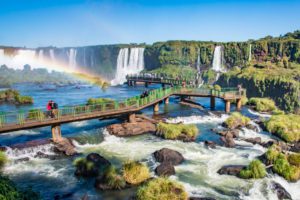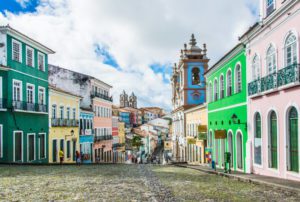I planned to spend a few weeks exploring Bogota, Medellin, the coffee plantation region, and Cartagena—that should be enough to learn about the country. I spent the first night in Bogota with a plan to return on my way back home, then flew to Medellin and Cartagena. Once, it was well known for its drug violence, but no longer it’s the case; in my observation, Colombia is definitely one of the most remarkable destinations in South America. Believe it or not, this country has changed a great deal, and cities like Bogota, Cartagena, and Medellin should be at the top of your travel list.
During my several trips, I have not felt unsafe at all. Every country and every city has its good and bad places, and Colombia is no different. Like me, you may have also been discouraged by friends and family a
Colombia is really big. It’s equal to combining landmasses of Germany, France, and the United Kingdom.
Best Time to Visit Colombia
When planning any vacation, you generally pay attention to the weather, events at the time, transportation costs, and availability for taking vacation time at work. Planning a trip to Colombia is no different. All of the related variables should be considered when planning your trip, and today I will try to give you a little bit of information that may make your decision of when to visit Colombia a little easier.
Colombian temperature is consistent year-round since it is so close to the equator. In fact, temperatures in Colombia are based on the altitude of a location, for instance, due to the altitude at which they are found, like Bogotá to be a cool city, Medellín a warmer city (mild), and Cartagena a hot city. Thus, in terms of temperature, deciding where to go is more important than when, as the temperature will be relatively the same at any time of the year. Paying attention to the rainy season will give advantages; usually, it’s between March – June and again between September – November.
Top Things To Do In Colombia
Dramatic Change, Medellin
Medellin is located in a valley surrounded by mountains, and the city sprawls for as long as the eye can see. Skyscrapers, parks, and villages are built right into the rock face of the mountains. The city was once known as the “murder capital of the world,” a place synonymous with cocaine and drugs, especially during and just after the life of Pablo Escobar and the reign of his Medellín Cartel. But a lot has changed in Medellín in the last ten years, making this city one of the fastest-growing and entrepreneurial in the region. Interestingly enough, urban planning has a lot to do with it.
It has only been in the past few years that it has been safe for tourists to visit Medellin. Now it has become a “can’t miss” city on many backpackers’ itineraries (including our own) and has become home to several expats. Recently, the city built a cable car system that reaches up to the highest neighborhoods so that its people can use it to commute to work in the city. This has created opportunities that have enabled people to rise out of poverty and live with dignity. Riding the cable car alongside people who were commuting home from a day of work was pretty powerful and beautiful. The cable car provided stunning views of the city from far and the barrios below us. We saw people going about their everyday lives in their homes and on the streets.
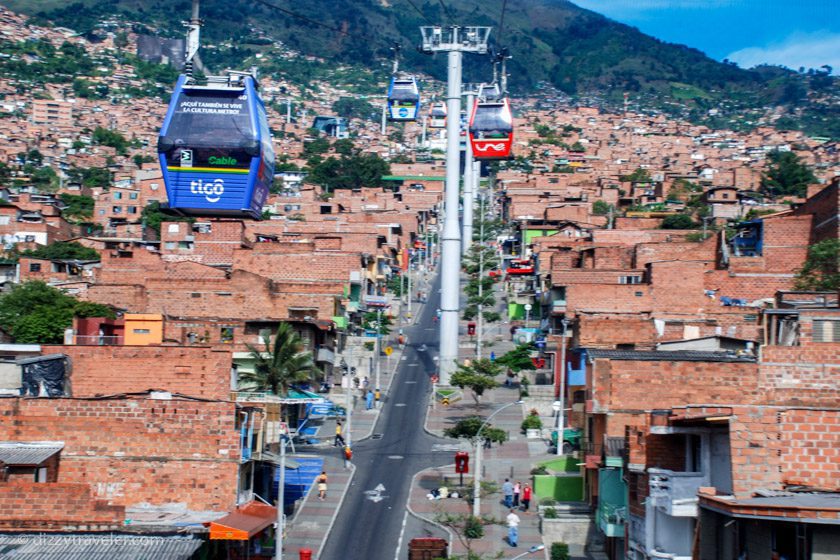
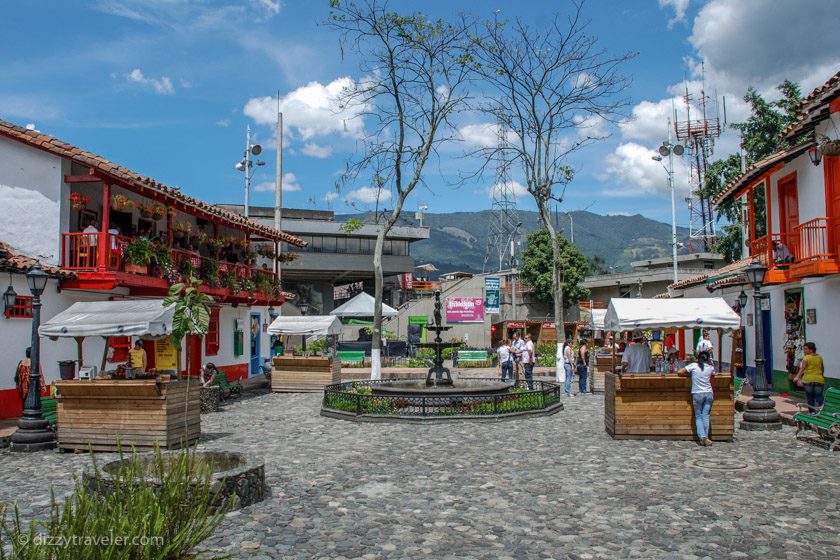
La Piedra Del Peñol ( The Rock of Guatapé )
Just two hours from Medellin, this town called Guatape is worth a visit. The town’s main attraction is the gigantic rock, visible pretty much anywhere you are in the city. The massive stone was formed millions of years ago.
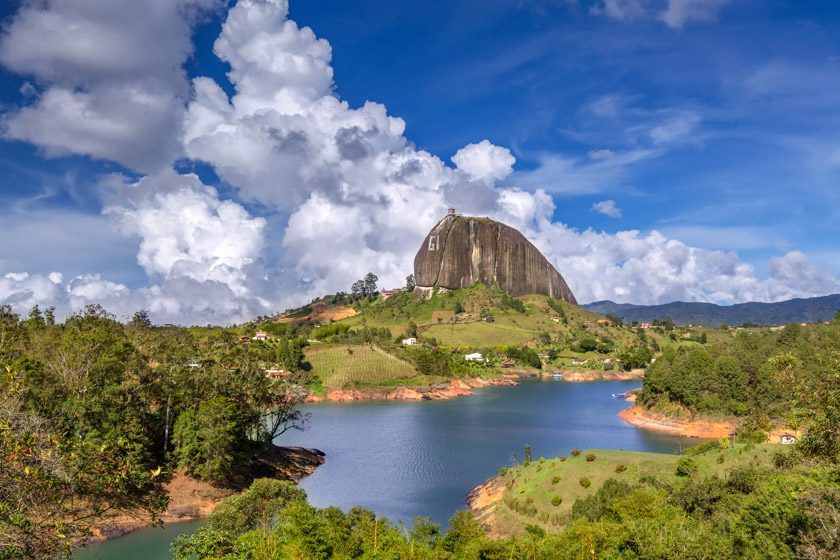
The Tahamies Indians, former inhabitants of this region, worshiped the rock of Guatape, and now can be accessed by an astounding staircase. At its highest part has an elevation of 7,005 ft (2,135 meters) over sea level. 659 steps lead you to the top of The Rock of Guatapé. Once on the top, we saw shops selling souvenirs. Food vendors have outdoor tables where you can enjoy snacks with a bottle of beer and the outstanding 360 vistas stretching out to the horizon in every direction. The scenery from the viewing platform is beautiful, as you can imagine.
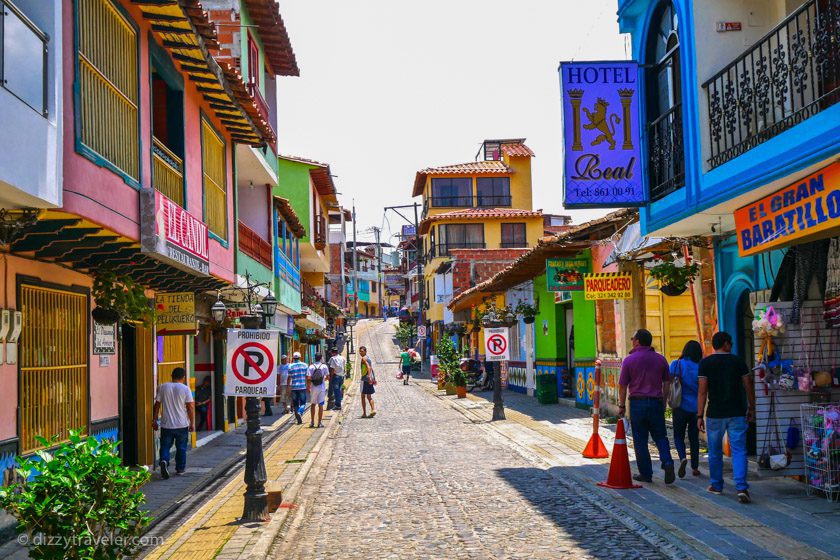
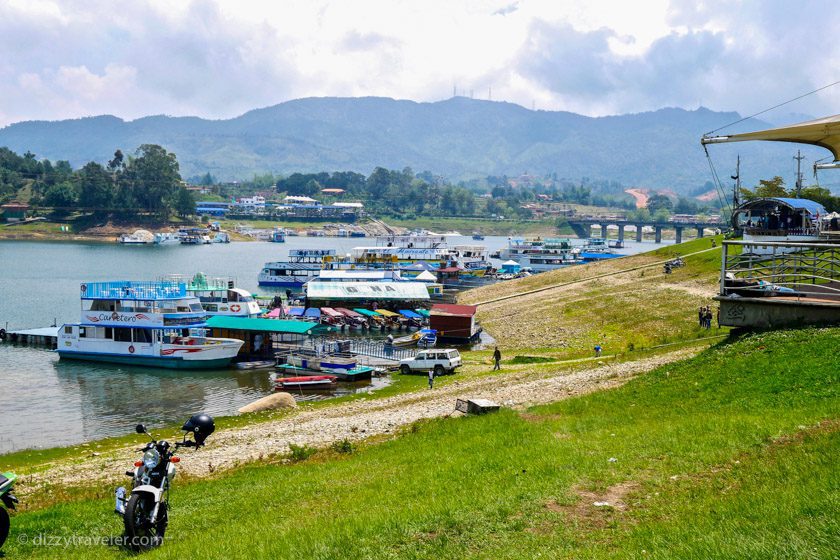
Visiting Coffee Country
The beautiful scenery of lush, mountainous landscapes and coffee plantations, coupled with the traditional architecture of terracotta-roofed farmhouses, led UNESCO to add the area to its list of World Heritage Sites in 2011.
The area is slightly cooler than the coastal region, with temperatures ranging between 10°C and 25°C. This, combined with the higher altitude and better soil quality, has provided optimal conditions for growing Colombia’s internationally renowned coffee. During our visit, we also learned how coffee is processed starting from the beginning.
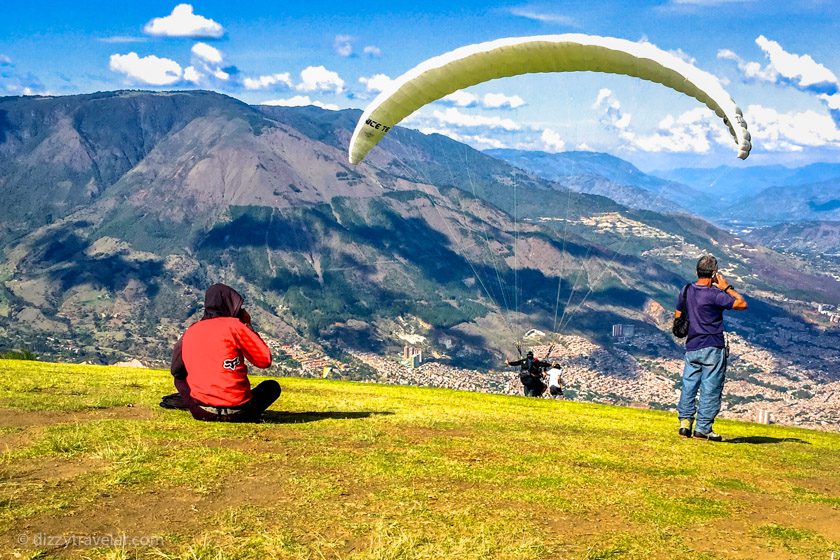
Tayrona National Park
The popular Tayrona National Park lies on the Caribbean coast near Santa Marta in Colombia. Where we found some of the loveliest coastlines, this wonderful Cabo San Juan beach is located about 30 minutes from the city of Rodadero, where you can enjoy the beautiful beachside activities like renting a hammock for the night, have local food, spend hours hiking and surfing. You can also get a guide to take you to a native village in the nearby mountains. The beauty of Tayrona is that you are going back to basics, with limited electricity, limited phone coverage, no internet or TV, and completely cut off from the rest of the world. But, of course, there is always the typical guitar guy in these types of places to provide entertainment whenever you travel!
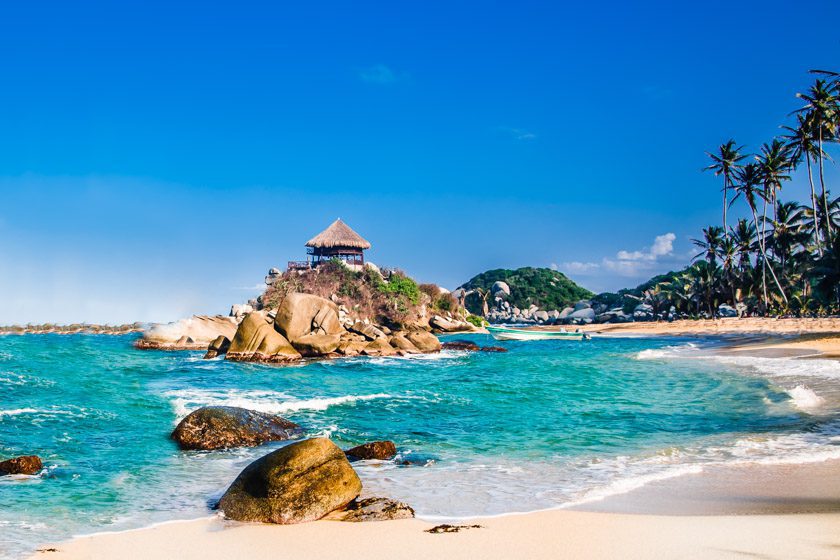
Bogota, a City in Transit
If you are headed anywhere in Colombia, chances are you may use Bogota’s El Dorado International Airport solely as a transit point; I suggest that you spend a day or two there. If you do, here is a quick guide to discovering the best of Bogota.
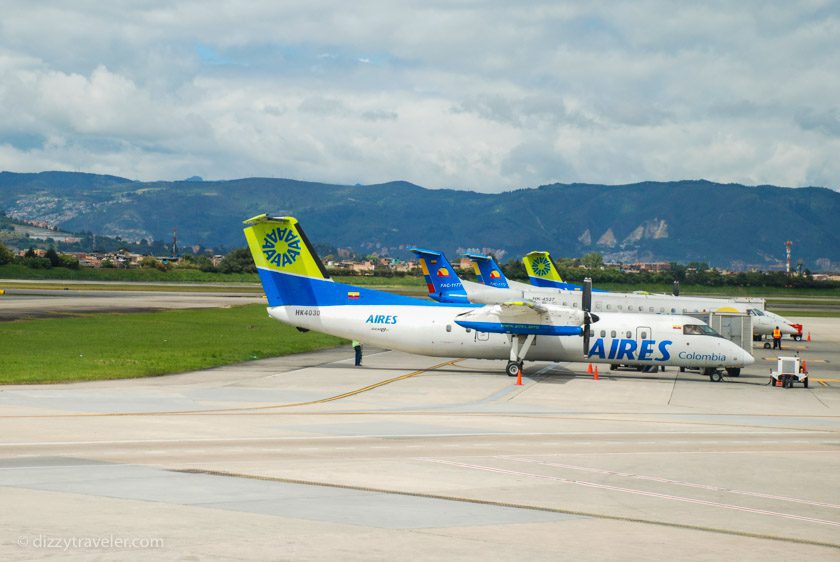
Bogota is a Metropolis with a population of almost 10 million people, ranked after Mexico City and NYC. The capital megacity is mixed with old and new due to rapid growth and modernization in recent years. To simplify things, the street is named by the number instead of names, which is easier to find where you are.
The city is constructed in a sort of grid pattern. Carreras run parallel to the mountains from South to North. Carrera numbers increase from East to West, away from the mountains. Calles cross the Carreras and run from East to West.
Officially the first neighborhood in Bogota, the capital city, was founded here in 1538. The colorful neighborhood is full of cobblestone streets and hundreds of years old buildings.
Bolivar Square
Arguably the heart of Bogota, the massive square is a beautiful and popular gathering place. Expect to see food vendors, street performers, and even farmers offering llama rides for children.
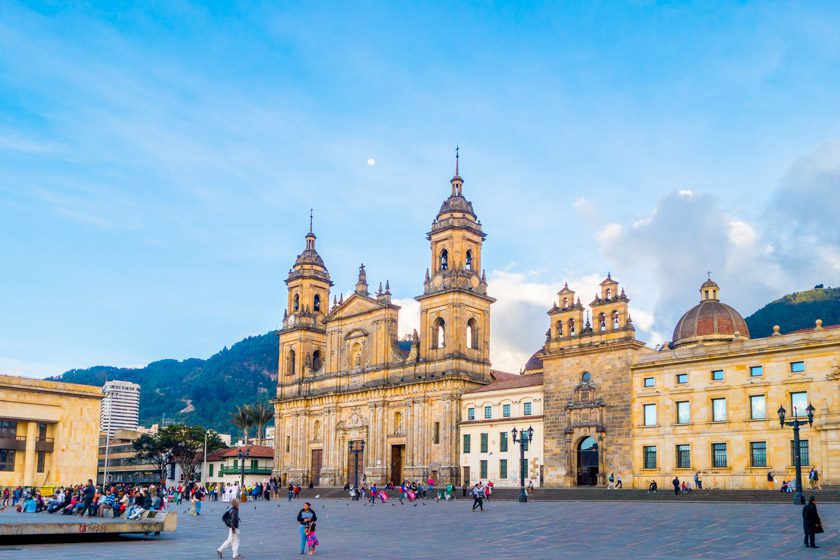
Monserrate
The mountain of Monserrate is not only a valuable landmark for getting around the city; a trip to the top via cable car is also a perfect way to get a real feel for the scale of this urban center. The cable car is 14.000 pesos per ticket before 5:30 p.m.; it then becomes 17.000 pesos (or around $4.50 and $5.50, respectively).
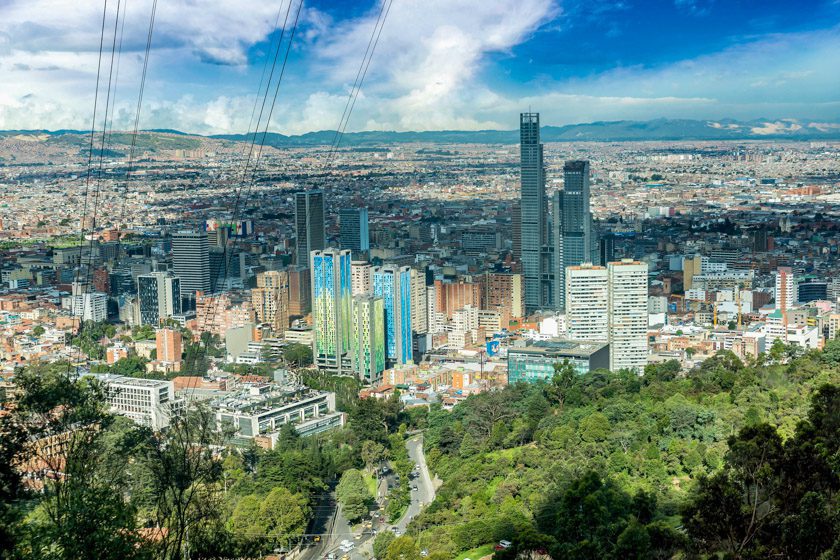
Getting There and Around
By Air:
Domestic air network connecting major cities is excellent in Colombia, including those in the Caribbean coastal area. The main domestic carriers are Avianca, Lan Colombia, Copa Airlines, and Satena. There are also flights from most major mainland cities to San Andres and Providencia islands.
By Road:
Colombian roads condition varies massively. The Panamerican Highway is mostly well paved, but when you start venturing out off the beaten track, the roads tend to be bumpier. Also, expect landslides in the more mountainous regions during the rainy season.
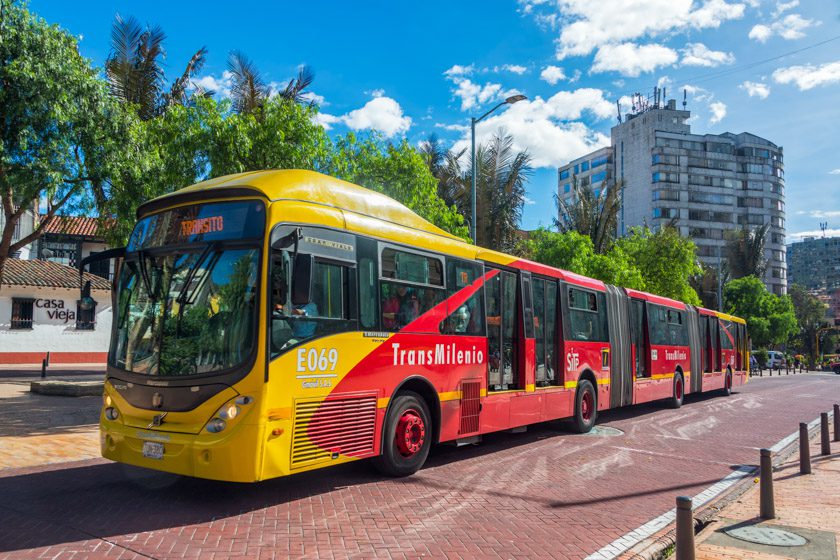
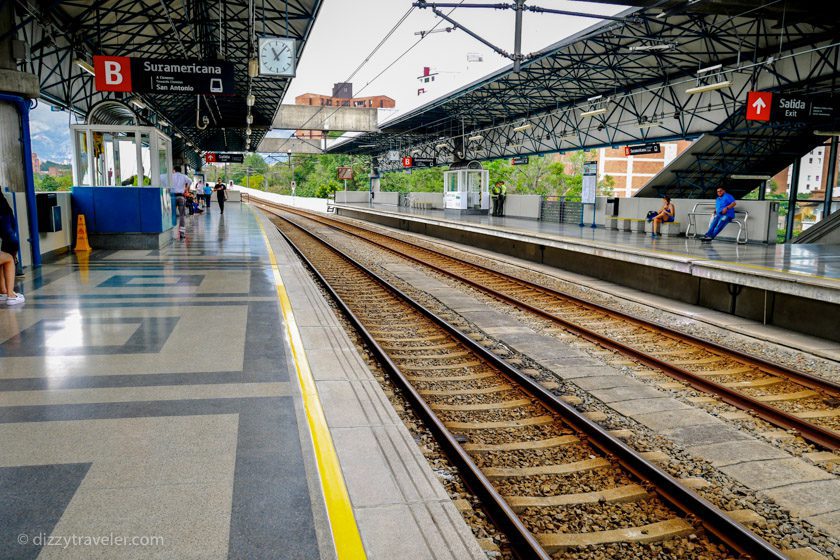
Rental Car:
You can pick up the rental car at the airport from any of the major international rental companies, but driving in the cities is not recommended. I have tried it in big cities like Lima and Bogota, but it could be difficult for many.
Taxi:
Taxis are cheap, convenient, and plenty in major cities and most midsize towns. They are also considered relatively safe to hail in the street. However, you may get charged a bit more for being a non-Spanish-speaking passenger; in Bogota, Cali, and Medellin, they have meters (taximeters), but in smaller places, you have to negotiate the price.
I usually don’t use taxis with a driver and somebody else inside, regardless if it’s a friend or someone for security reasons; such a situation may be unsafe for me, a common tactic for robbery. Good idea to use one of the taxi apps like Uber, Tappsi, and Easy Taxi with your smartphone for a safer ride in most major cities.
Motorbike:
Some northern cities use motorbike taxis, which is a quick way of getting around if you’re solo. These may not be the safest and are illegal in places like Cartagena, but they are not enforced. You may find options for renting a motorbike in resort areas like San Andres.
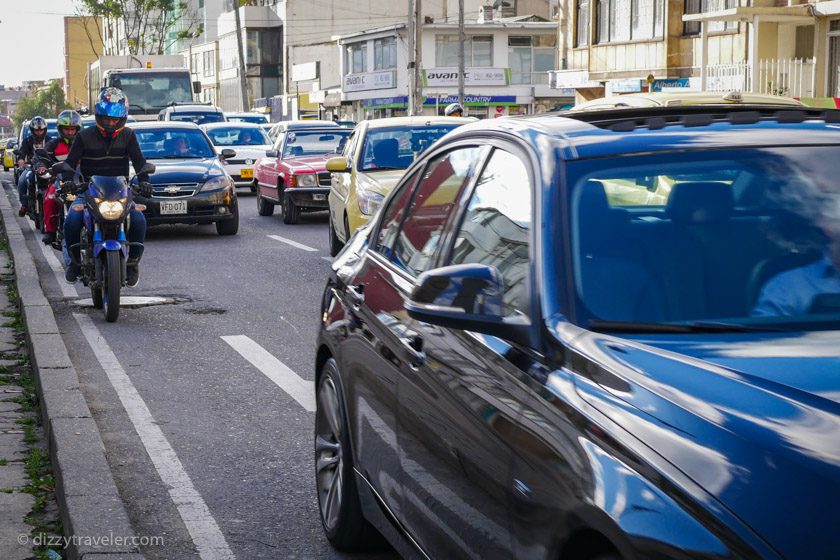
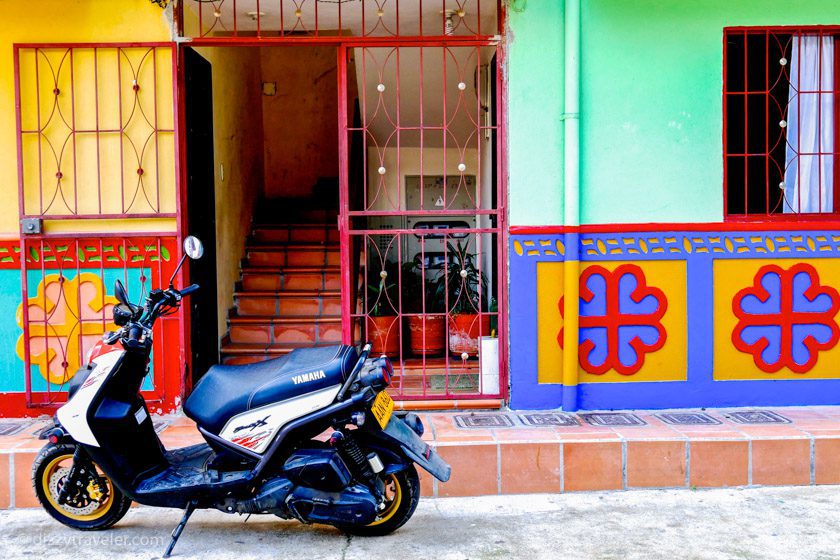
Visa Requirement
A Colombia tourist visa is not required for citizens of the United States of America for a stay of up to 90 days. However, all U.S. citizens who do not also hold Colombian citizenship must present a valid U.S. passport to enter and depart Colombia.
Book Your Sightseeing Trip
With a multitude of beautiful places to visit and a range of exciting sightseeing activities, you are sure to create unforgettable memories. To explore your options, simply click on the affiliate link below.

